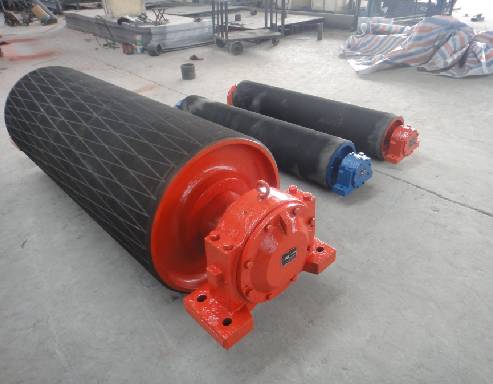 Afrikaans
Afrikaans  Albanian
Albanian  Amharic
Amharic  Arabic
Arabic  Armenian
Armenian  Azerbaijani
Azerbaijani  Basque
Basque  Belarusian
Belarusian  Bengali
Bengali  Bosnian
Bosnian  Bulgarian
Bulgarian  Catalan
Catalan  Cebuano
Cebuano  Corsican
Corsican  Croatian
Croatian  Czech
Czech  Danish
Danish  Dutch
Dutch  English
English  Esperanto
Esperanto  Estonian
Estonian  Finnish
Finnish  French
French  Frisian
Frisian  Galician
Galician  Georgian
Georgian  German
German  Greek
Greek  Gujarati
Gujarati  Haitian Creole
Haitian Creole  hausa
hausa  hawaiian
hawaiian  Hebrew
Hebrew  Hindi
Hindi  Miao
Miao  Hungarian
Hungarian  Icelandic
Icelandic  igbo
igbo  Indonesian
Indonesian  irish
irish  Italian
Italian  Japanese
Japanese  Javanese
Javanese  Kannada
Kannada  kazakh
kazakh  Khmer
Khmer  Rwandese
Rwandese  Korean
Korean  Kurdish
Kurdish  Kyrgyz
Kyrgyz  Lao
Lao  Latin
Latin  Latvian
Latvian  Lithuanian
Lithuanian  Luxembourgish
Luxembourgish  Macedonian
Macedonian  Malgashi
Malgashi  Malay
Malay  Malayalam
Malayalam  Maltese
Maltese  Maori
Maori  Marathi
Marathi  Mongolian
Mongolian  Myanmar
Myanmar  Nepali
Nepali  Norwegian
Norwegian  Norwegian
Norwegian  Occitan
Occitan  Pashto
Pashto  Persian
Persian  Polish
Polish  Portuguese
Portuguese  Punjabi
Punjabi  Romanian
Romanian  Russian
Russian  Samoan
Samoan  Scottish Gaelic
Scottish Gaelic  Serbian
Serbian  Sesotho
Sesotho  Shona
Shona  Sindhi
Sindhi  Sinhala
Sinhala  Slovak
Slovak  Slovenian
Slovenian  Somali
Somali  Spanish
Spanish  Sundanese
Sundanese  Swahili
Swahili  Swedish
Swedish  Tagalog
Tagalog  Tajik
Tajik  Tamil
Tamil  Tatar
Tatar  Telugu
Telugu  Thai
Thai  Turkish
Turkish  Turkmen
Turkmen  Ukrainian
Ukrainian  Urdu
Urdu  Uighur
Uighur  Uzbek
Uzbek  Vietnamese
Vietnamese  Welsh
Welsh  Bantu
Bantu  Yiddish
Yiddish  Yoruba
Yoruba  Zulu
Zulu conveyor idler types
Types of Conveyor Idlers
Conveyor idlers are essential components in material handling systems, designed to support the conveyor belt and assist in the efficient movement of materials. They play a crucial role in ensuring that belts operate smoothly, reducing friction, and extending the lifespan of the conveyor components. Different types of conveyor idlers cater to various applications and environments, ensuring optimal performance in diverse industries. Here, we explore some of the most common types of conveyor idlers.
1. Regular or Troughing Idlers Troughing idlers are the most commonly used type. They consist of rollers that are set at an angle, creating a trough shape that helps to confine materials on the belt. This design is particularly effective for transporting bulk materials like grains, ores, and other loose items, as it minimizes the risk of spillage.
Types of Conveyor Idlers
3. Impact Idlers Located at loading zones or areas where material falls onto the conveyor belt, impact idlers are designed to absorb the shock of falling materials. They are usually equipped with extra cushioning or rubber rings to prevent damage to the belt and idler system, enhancing the longevity of the conveyor.
conveyor idler types

4. Training Idlers These idlers are employed to keep the conveyor belt aligned properly. Misalignment can lead to excessive wear and can cause materials to spill over the side. Training idlers are adjustable and help to correct any belt tracking issues, ensuring smooth operation and reducing maintenance costs.
5. Self-Cleaning Idlers In environments where sticky materials are transported, self-cleaning idlers play a critical role. Their design includes features that prevent material buildup on the rollers. This not only maintains efficiency but also reduces the frequency of maintenance, allowing for continuous operation.
6. Roller Bed Idlers Used particularly in high-speed conveyors, roller bed idlers provide excellent support and minimize friction. These idlers are designed to facilitate the smooth movement of materials, making them ideal for light to medium applications.
In conclusion, the choice of conveyor idlers significantly impacts the efficiency and reliability of material handling systems. By selecting the appropriate type based on the specific requirements of the application, industries can optimize their operations, reduce maintenance costs, and improve overall productivity. Understanding the different types of conveyor idlers is crucial for anyone involved in the design, maintenance, or operation of conveyor systems.
-
Revolutionizing Conveyor Reliability with Advanced Rubber Lagging PulleysNewsJul.22,2025
-
Powering Precision and Durability with Expert Manufacturers of Conveyor ComponentsNewsJul.22,2025
-
Optimizing Conveyor Systems with Advanced Conveyor AccessoriesNewsJul.22,2025
-
Maximize Conveyor Efficiency with Quality Conveyor Idler PulleysNewsJul.22,2025
-
Future-Proof Your Conveyor System with High-Performance Polyurethane RollerNewsJul.22,2025
-
Driving Efficiency Forward with Quality Idlers and RollersNewsJul.22,2025





























